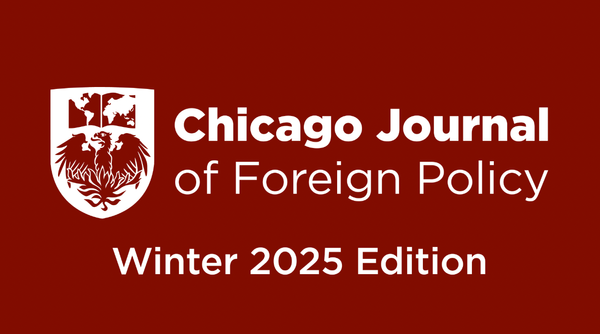In Defense of Development - A Response to "The Case for Unconditional Aid"

The following piece is a response to a recent blog post by staff contributor Ben Silvian.
by JAKOB URDA, ’19, and ZACHARY LEMONIDES, ’19
In his recent piece, ‘The Case for Unconditional Aid,’ Ben Silvian claims that “the problem is that structural adjustment programs are unequivocally bad”— but history rarely speaks in such absolutes. The impacts of IMF and World Bank loan conditionality are actually fiercely contested. While the execution of structural adjustment can be, and has been, improved, the core concept and overall effect of the Washington Consensus has been positive. First, tying loans to liberalization lifts long-term barriers to poverty reduction imposed by high tariffs and central planning—and makes donor nations far more likely to supply loanable funds. Second, the success cases of structural adjustment have overshadowed the failures, lifting tens of millions out of extreme deprivation. Finally, the new programs that have replaced and augmented structural adjustment, termed “poverty reduction strategy papers,” address the lion’s share of the concerns brought up by critics of structural adjustment.
Silvian criticizes structural adjustment for implementing liberalization policies too rapidly. But why does structural adjustment happen quickly? At first glance, the overzealous short term conditions attached to loans seem nefarious or myopic. But remember, these loans are given to states on the brink of default– where institutions have failed and balance sheets have run amok. In such a climate, fast paced liberalization is essential. Funneling money into broken nationalized industries will not bring countries out of insolvency, and continuing the status quo all but ensures further default in the future. At the bare minimum, lender nations would demand higher interest rates for their loans, because of the risk involved in lending to nations with a proven track record of fiscal problems. Default would be the worst of all possible worlds, because the countries at risk would find it nigh impossible to secure low-interest loans in the future. On the other hand, by agreeing to pursue more pro-growth institutions, borrower nations give their creditors confidence in their ability to repay loans. A world without conditions would see fewer, more expensive loans, which would devastate the countries that need funding the most.
Moreover, even if one concedes the short term harms of SAP conditionality, liberalization in the long term is preferable to the alternative of poor state planning. Poorly planned liberalization and shock therapy have increased the odds of short term poverty– Central planning and high trade barriers make it a certainty. Anecdotally and empirically, liberal economic policy has proven itself to be better for poverty alleviation in developing nations than central planning and protectionism. The failures of Soviet Bloc development, the rapid increases in Chinese per capita income following liberalization, and the slow growth brought on by protectionism in modern developing nations such as Pakistan are testaments to the idea that long term economic growth and poverty reduction is best served through economic openness. With regards to Structural Adjustment the gains from liberalization have outpaced the short term harms as notable only 36 percent of reform packages have failed, while the vast majority have markedly improved quality of life.[1]
Taken alone, the success of structural adjustment in India would likely justify the cases of failure. In 1991, India faced a balance of payments crisis that threatened to spill over into default. It goes without saying that an Indian government default would have been a disaster for the global financial system and for the millions of poor who depended on Indian government programs. The root of the financial problems lay in poor central planning, inefficient state owned enterprises, and tariffs that made India one of the least business friendly economies in the world. The inefficient and unwieldy Indian economy was primed for a crisis, and a lack of a strong private sector made economic recovery slow and unreliable. Loans from the IMF prevented the Indian government from defaulting and set the stage for Liberalization. According to the Independent Evaluation Group, “[structural adjustment] abolished the complex system of industrial and import licensing, liberalized trade policy, and introduced measures to strengthen capital markets and institutions.”[2] As a result, the pace of poverty reduction tripled from .44 percentage points to 1.36 percentage points. Growth was initially slow — admittedly, shock therapy produces a number of economic losers — but without liberalization, India’s modern foreign investment fueled economy would be impossible.
Nobody would contest that structural adjustment could be improved, the uniform distribution of massive economic restructuring is bound to cause problems. But the IMF and World Bank are receptive to criticism, and the economists Silvian cites, such as Krugman, are not opponents of promoting liberalization — just of the hegemonic or carelessly quick rollout of such policies. As a result, the IMF and World Bank have replaced structural adjustment with a system of loan conditionality called ‘poverty reduction strategy papers’, or PRSPs. PRSPs fix the exact problems that Silvian has with Structural Adjustment, namely that they take into account local experts opinions and involve a gradual rollout of reforms. Results suggest that countries under PRSP treatment have achieved better poverty reduction outcomes than those in control groups.[3] PRSPs have also been found to significantly improve standards of living in relation to Millennium Development Goal targets. This is hardly surprising, because economic development and political reform go hand in hand with better infrastructure, welfare, and social services. It turns out that the best way to reduce poverty is to support the development of strong institutions and not to force developing countries into bankruptcy.[4]
The final criticism of Silvian’s argument is that his cure is worse than the disease. Providing unconditional loans to illiberal, autocratic, often communist states rarely helps anyone. Unconditional loans sap any impetus for reform, because the sitting regime has no incentive to change their behavior when they can be assured of bailouts. Unlimited unconditional loans reduces the reliance of a the state on promoting sustained economic growth. If a regime can rest assured that their needs will be taken care of through international finance, improving the lives of the civilian population takes the back seat. This logic is supported by a wide range of progressive political activists, who oppose unconditional US aid to autocratic regimes like Saudi Arabia, claiming that American money entrenches the unaccountable status quo. Politically illiberal countries that repress their people and have next to no opportunity for social mobility have no incentive to change their behavior when they can rely on steady international funding. Making it explicit that loans require political reform and are not unending is a crucial process in encouraging reform. Indeed, structural adjustment reforms in Tanzania have been linked to improvements in gender imbalances and government support for increases in school enrollment.[5]
Structural adjustment policies have a mixed history, there is no denying that there have been failures in the past. But Silvian throws the baby out with the bathwater when he uses this to reject the principle of aid conditionality. The IMF has learned from the the rough implementation of SAP in several countries, and PRSPs do take into account local economies and need when determining conditions. But by enacting a blanket ban on aid conditionality, as Silvian wishes, the outcome would be a reduction in the number of loans given out, an increase in the interest rate of those loans, and, most damning, the elimination of any impetus for economic liberalization and reform. The end result of this would be the exacerbation of structural economic flaws, and millions more living in poverty.
Works Cited:
[1] Dollar, David, and Jakob Svensson. “What Explains the Success or Failure of Structural Adjustment Programmes?” The Economic Journal, vol. 110, no. 466, 2000, pp. 894–917.
[2] “Structural Adjustment in India .” The World Bank, 2012, Web.
[3] Elkins, Meg, et al. “Do Poverty Reduction Strategy Papers Reduce Poverty and Improve Well-Being?” Discussion Papers in Economics, The University of Nottingham, Feb. 2015.
[4] Elkins, Meg, et al. “Are Poverty Reduction Strategy Papers Associated with Reductions in Poverty and Improvements in Well-Being?” Journal of Development Studies, 13 Mar. 2017.
[5] Walliser, Jan. “Conditionality in Development Policy Lending.” The World Bank , Nov. 2007.





